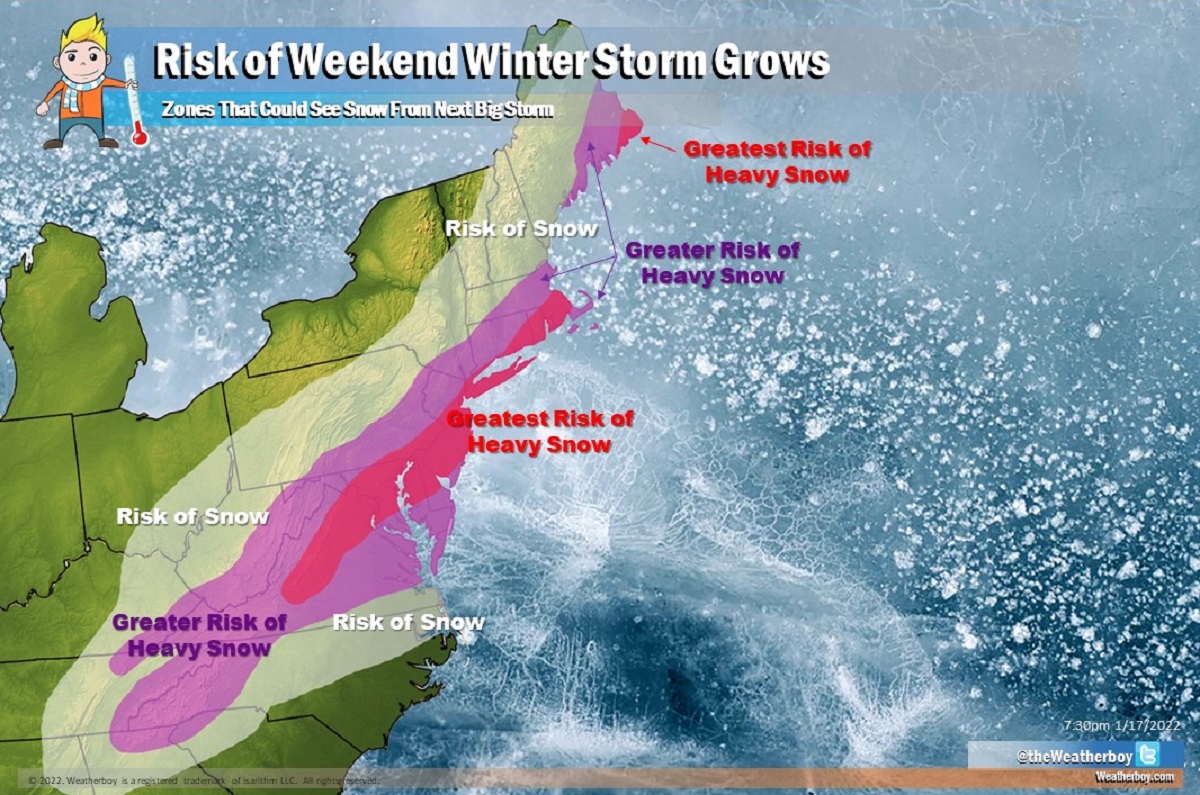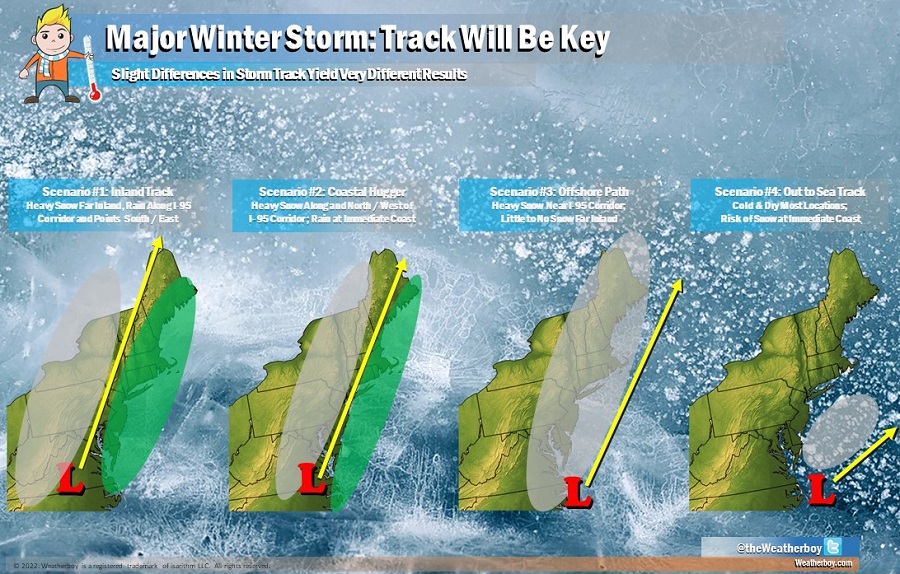
An Arctic air invasion will be arriving in portions of the country this week; with plenty of cold air and an arriving atmospheric disturbance from the north, the potential of a snow storm threat for the end of the week in the east continues to grow.
The winter storm responsible for dumping more than 20″ of snow in parts of the northeast continues to move away, with fair weather expected to build in behind the older winter storm tomorrow. Arctic high pressure located in the upper Mississippi River Valley by Thursday night is forecast to spread east, impacting the Mid Atlantic by the end of the week and start of the new weekend.
This moving Arctic air mass will bring frigid cold temperatures and the risk of light snow to the Mid Atlantic. Some of the coldest temperatures from this air mass will settle into New England and the Mid Atlantic Thursday night and Friday night. As the cold air moves in, it could wring-out a light snow event over portions of the Mid Atlantic where an inch or two of snow could fall.
However, as northern stream energy drops out of the Canadian Prairies late in the week, it could interact with energy and moisture building in the southern stream over the southeastern United States. If all of these ingredients come together, another winter storm could form and impact the U.S. East Coast.

The storm track always helps define who will get precipitation and what kind of precipitation they’ll get. In the first scenario, a storm moves up the northeast well inland; this brings heavy rain well inland and keeps snow even farther inland. The second scenario follows a track similar to what just happened. In this case, the storm traveled up the I-95 corridor, bringing heavy snow far inland, heavy rain at the coast, and an icy mix of snow changing to rain in the middle. But with Arctic air in place and a somewhat different storm track shaping up, it’s possible a third or fourth scenario could occur. In the third scenario, the storm is far enough off-shore to keep precipitation as all snow in the northeast. But because the storm is off shore just far enough, not much in the way of snow falls far inland. In the fourth scenario, the storm moves so far out to sea that little snow is seen anywhere on land, although the immediate coast could see clouds and snowflakes.
For now, it’s becoming more likely, although not definitive, that this next storm would follow the third scenario, bringing heavy snow to portions of the Mid Atlantic and extreme southeastern New England, but not much more inland from there. Precipitation could break out late Thursday over portions of the southeast, with ice and snow falling in the southern Mid Atlantic by Friday afternoon. If this scenario continued, snow would break out along the I-95 corridor between Washington, DC and Boston, MA Friday evening and become heavy at times, especially near the I-95 corridor. The snow would continue, heavy at times, early on Saturday before exiting the coast of New England. In a third scenario situation, places hit hard with this today and yesterday’s snow would see very little on the north side of the storm.
As meteorologists see just how the Arctic air will behave, and what’ll become of energy in the northern and southern streams, confidence will increase in the forecast for the end of the week. For now, people along the East Coast should keep a watchful eye for what could unfold Friday and Saturday. While confidence isn’t high with how the next winter storm will evolve, confidence is very high that a very cold stretch will be visiting the Great Lakes, Ohio River Valley, New England, and Mid Atlantic regions this week.